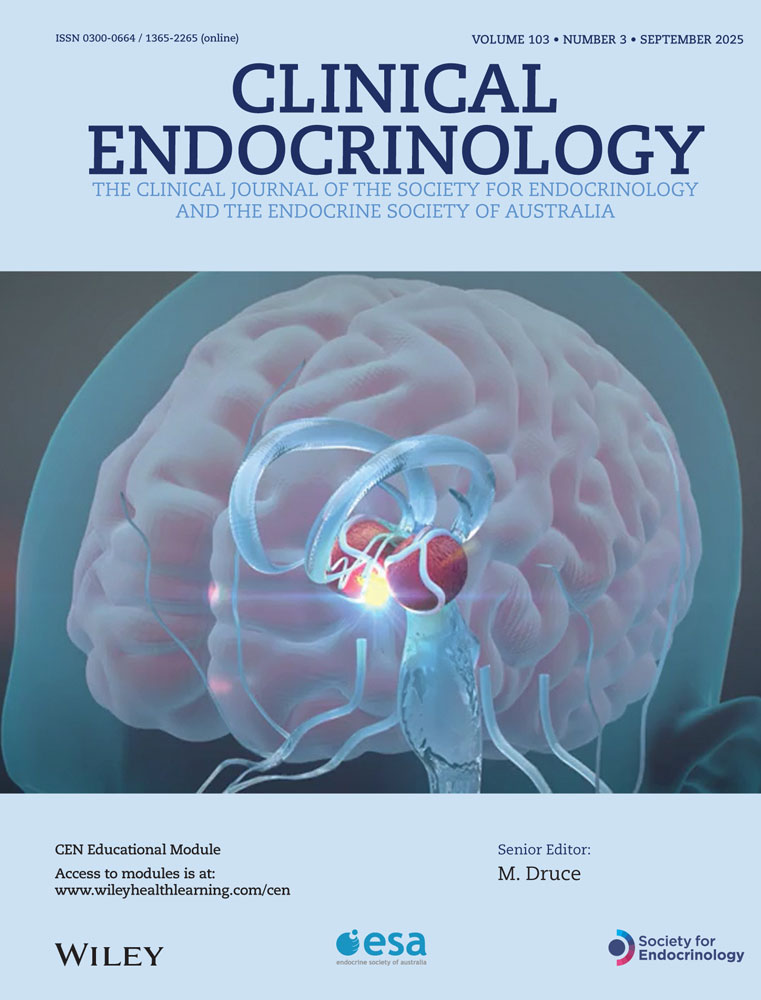Long-term follow-up of contralateral lobe in patients hemithyroidectomized for solitary follicular adenoma
Abstract
OBJECTIVES Since there are no available conclusive studies on the long-term evolution of remnant thyroid tissue after hemithyroidectomy in patients who undergo surgery for solitary follicular adenomas, we searched for such cases in our records to elucidate this issue.
DESIGN Search criteria were as follows: (i) presence of a single palpable thyroid nodule with the remainder of the gland normal on palpation; (ii) clinically euthyroid status at the time of surgery; (iii) histological diagnosis of nodule as follicular adenoma; (iv) a hemithyroidectomy operation, sparing the contralateral lobe; (v) normal macroscopic aspect of the contralateral lobe at the time of surgery; and (vi) at least 4 years of postoperative follow-up.
PATIENTS Only 47 female cases were found to meet above criteria, with a mean age of 45·9 years (range: 23–79) at the time of surgery and a mean follow-up of 7·2 years (range: 4–32). Besides evaluating the presence or absence of antithyroid antibodies and the extranodular histology of tissue removed during surgery, a preoperative TRH test also allowed patients to be classified into two groups: normal extranodular thyroid (NET) (n = 32) and abnormal extranodular thyroid (AET) (n = 15).
RESULTS Eleven of the 15 patients with AET had thyroid autoimmunity, with or without overt histological thyroiditis, and the remaining four had subclinical hypothyroidism with negative antithyroid antibody titres. In the entire study population, only 28 patients received treatment with L-T4 immediately after surgery, none of whom had any alterations in the contralateral lobe. However, six of the nineteen patients not treated with T4 (31·6%) developed overt abnormalities in the contralateral lobe, including the only three with AET who had not received L-T4 treatment. The remaining three were two patients with NET, who showed postoperative TSH hyper-responsiveness to TRH (peak TSH > 25 mU/l), and one who developed a new follicular adenoma 32 years later. To date, none of the patients with NET, who had a normal TRH test after surgery, have developed any kind of alterations in the contralateral lobe, even those who received no L-T4 prophylactic treatment.
CONCLUSIONS The findings of this study suggest that: (i) there is a higher risk of follicular adenomas developing in a gland affected by thyroid autoimmunity than in a previously normal gland; (ii) L-T4 therapy may prevent the formation of new nodules or the development of goitre in the contralateral lobe; and (iii) in the absence of prophylactic treatment after surgery, the contralateral lobe of subjects with thyroid autoimmunity and/or previous subclinical hypothyroidism develops morphological abnormalities.




